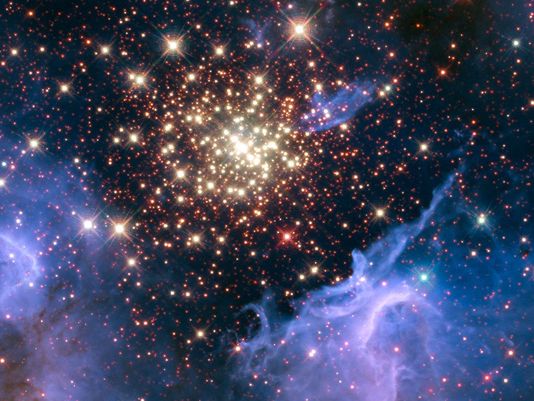
In honor of Independence Day, NASA released a photo of sparkling stars that the space agency compared to a “burst of celestial fireworks.”
“Like a July 4 fireworks display, a young, glittering collection of stars resembles an aerial burst,” NASA said in a press release about the photo, which is actually a combination of two images captured by the Hubble Space Telescope in 2009.
The cluster of stars is surrounded by clouds of interstellar gas and dust — the raw materials for the creation of new stars, NASA said.
The nebula, located 20,000 light-years from Earth in the constellation Carina, contains a central cluster of huge, hot stars, called NGC 3603, the space agency said.
“Appearing colorful and serene, this environment is anything but,” NASA said. “Ultraviolet radiation and violent stellar winds have blown out an enormous cavity in the gas and dust enveloping the cluster.”
Most of the stars in the cluster were “born” around the same time but have different colors, temperatures, sizes and mass, NASA said. The cluster includes stars at various stages of their lives, giving scientists a chance to perform detailed analysis of stellar life cycles.
“NGC 3603 also contains some of the most massive stars known,” NASA said. “These huge stars live fast and die young, burning through their hydrogen fuel quickly and ultimately ending their lives in supernova explosions.”
Star clusters give scientists important clues to help them understand the origin of massive stars, the space agency said.
“Astronomers also use massive clusters to study the distant starbursts that occur when galaxies collide, igniting a flurry of star formation,” NASA said.
The relative closeness of NGC 3603 to Earth “makes it an excellent lab for studying such distant and momentous events,” NASA said.

